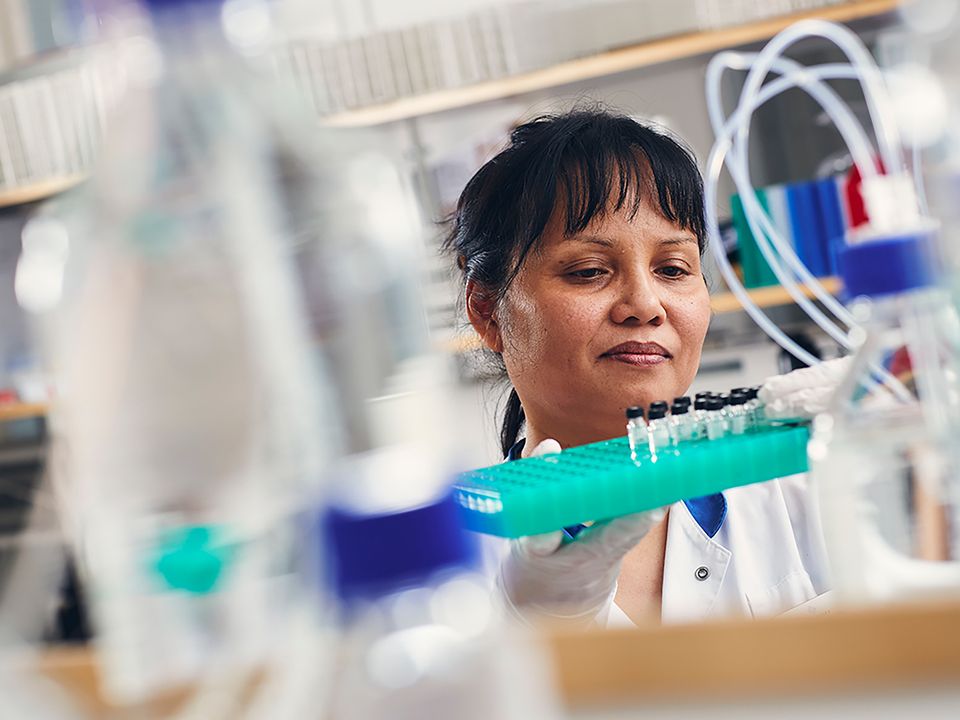Bright study ((Be Right with Breast Cancer Risk Management) was launched in 2022 and aims to Evaluation of microscreening using individual genetic risk in health care in Sweden, Estonia and Portugal. In Sweden, the study is being led by the Uppsala Regional/Academic Hospital.
-We are surprised that so many young women showed an increased risk of breast cancer. According to preliminary results, approximately 16 percent of women ages 30 to 49 have a higher risk of breast cancer than the average for 50-year-old women. As the risks increase, affected women are advised to book a consultation at a breast cancer clinic to discuss screening strategies and individually adapted preventive measures, says Ina Feldman, health economist and project director of the study in Uppsala.
In Sweden, breast cancer is the most common type of cancer in women. Here, women between the ages of 40 and 74 are called for mammography screening with the aim of detecting breast cancer as early as possible and reducing the mortality rate.
According to Andreas Karakatsanis, chief physician at the Academic Hospital Breast Clinic, the current method of breast cancer screening based on age is inadequate.
– Not all women should be examined in the same way. Breast cancer is partly genetic, so the starting point should be a woman's individual genetic risk of developing breast cancer. He explained that genetic tests are used through which we find women more at risk, so that they can come for screening at the appropriate time.
The BRIGHT study runs from 2022 to 2024 and began in Uppsala a year ago. Since then, nearly 800 women aged 30 to 49 have been recruited in Sweden. The study evaluates a method for accurate breast cancer screening based on genetic predisposition and increased risk in women. Participants are tested through a simple and painless oral sample using a cotton swab, from which DNA can be extracted. Risk is assessed using the Genetic Risk Score (PRS) test. on which it is based Multiple variations in a person's DNA. The test provides important additional information to clinical information. Based on risk, women receive personalized screening recommendations already from the age of 30 to 35 years, enabling prevention and early detection of breast cancer.
According to the researchers, by including PRS technology in a dedicated breast cancer screening program, people with a higher genetic risk can be identified more accurately.
– This makes it possible to start screening and preventive measures at more convenient times for those at increased risk compared to current standardized mammography, emphasizes Ina Feldman and continues:
– In the long term, we expect to achieve a 20 to 40 percent reduction in cancer-related deaths in the 40 to 49 age group. Another important goal of the new approach is to improve the use of healthcare resources by ensuring that interventions are more effectively allocated to those who need them most.
Helpful note: Two feedback surveys were completed with participants, of which 75 percent indicated that they were able to handle their genetic risk information well. Almost all participants (92 percent) were satisfied with their participation in the BRIGHT project, found the information clear and understandable, and felt reassured after receiving the report
Facts: The Bright Study (Be Right About Breast Cancer Risk Management)
- It will be held in 2022-2024 in Sweden, Estonia and Portugal. The study is supported by the European Commission through EIT Health.
- The main goal is to improve early detection of breast cancer based on genetic risk, rather than today's standardized screening based solely on age.
- The target population is women aged 30 to 49 years with no history of malignancy and who have not been previously tested for genetic predisposition to breast cancer using polygenic risk analysis. Women undergo genetic testing where several genes are analysed, which are spread across chromosomes but all affect the same characteristic.
- In Sweden, 800 women can participate in the study. Both study participation and associated care services are free.
- Women's personal genetic predisposition to breast cancer is assessed with the PRS/AnteBC test. It is a CE marked in vitro diagnostic medical device and has been validated using Estonian and UK Biobank data.
- Risk is assessed through a combination of clinical information and genetic risk score (PRS). Based on the test results, women receive recommendations about what age and how they should start participating in mammography screening. In addition, the need for more detailed genetic testing has been identified by medical geneticists.
- All medical tests and measures used in the BRIGHT study are approved healthcare services in Sweden and the European Union.

“Extreme tv maven. Beer fanatic. Friendly bacon fan. Communicator. Wannabe travel expert.”






More Stories
New guidelines for eating disorder care: 'Much about increasing knowledge'
How will artificial intelligence impact writing and the teaching of writing?
Spring's most popular topics – about barefoot people, GAPS, lymphatic system/self-care, thermal imaging, edibles in nature, medicinal mushrooms, etc.